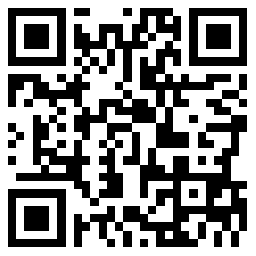中英
1
oxygenated blood中文是什么意思
- 中文翻譯
- 造句
- 含氧血
- oxygenate vt. 【化學】用氧處理,使和氧化合,充氧于。 oxyg ...
- blood n. 1.血,血液;生命液。 2.血族,血統(tǒng);種族;家族 ...
- oxygenated 充了氧的; 充氧的; 含氧的; 能生氧的; 氧合的; 氧化的; 氧化了的; 用氧飽和了的
- oxygenated asphalt 氧化瀝青
- oxygenated black 氧化炭黑
- oxygenated chemicals 含氧化合物
- oxygenated compound 氧化化合物
- oxygenated fuel 含氧燃料
- oxygenated gasoline 含氧汽油; 加氧汽油
- oxygenated haemoglobin 氧合血紅蛋白
- oxygenated hemoglobin 氧合血蛋白; 氧合血紅蛋白
- oxygenated oil 氧化油
- oxygenated rubber 氧化橡膠
- oxygenated water 充氧水; 含氧水
- well-oxygenated 富氧的; 氧化好的
- oxygenated aqueous solution 充氧水溶液
- oxygenated heme pigments 氧化正鐵血紅素
- well-oxygenated environment 氧化環(huán)境
- blood n. 1.血,血液;生命液。 2.血族,血統(tǒng);種族;家族(關系);家世;門第;名門,門閥; 〔the blood〕 貴族血統(tǒng)。 3.生命,活力;元氣。 4.流血,殺戮,殺人(罪),犧牲。 5.血氣;氣質,氣性,脾氣;熱情;激怒;肉欲;獸欲。 6.〔主英〕血氣方剛的人;花花公子,紈?子。 7.〔集合詞〕人員。 8.(樹木、果子等的)赤色汁液;〔美俚〕蕃茄醬。 9.(馬的)純種。 the circulation of blood 血液循環(huán)。 His blood is up. 他熱情激昂〔動怒,發(fā)火〕。 They demand blood for blood. 他們要求以血還血。 avenge the blood of one's father 報殺父之仇。 be of mixed blood 混血種。 a lady of blood 貴婦人。 be related by blood 有親戚關系。 Blood is thicker than water. 血比水濃;〔比喻〕自己人總是自己人;近客不如遠親,疏不間親。 My blood be on your head! 我若死其罪在你。 It made my blood run cold. 令人心驚膽寒,毛骨悚然。 We need fresh blood. 我們需要新的人員。 the young bloods of Cambridge 劍橋大學的少壯派。 a young blood 血氣方剛的少年。 a bit of blood 純種馬。 bad blood 敵意;不和;仇恨;惡感 (make bad blood between the brothers 使兄弟之間不睦)。 blood and iron 【歷史】(德國宰相俾斯麥的)鐵血政策;黷武政策。 blood in one's eyes 〔美國〕期待必勝。 blood out of a stone (得到)冷酷人的同情。 blood transfusion 輸血。 blue blood 貴族血統(tǒng)。 for the blood of me 拼命,無論如何。 fresh blood (社團、家庭的)新成員;新手。 full [whole] blood (同父母的)嫡親關系。 get in the [one's] blood 動人,迷人(Golf is something that gets in the blood. 高爾夫球是一項迷人的運動)。 get [have] one's blood up (使)激動,(使)憤激。 half blood 異父〔異母〕關系。 ill blood = bad blood. in blood 生命力旺盛;欣欣向榮。 in cold blood 1. 蓄意地(而非出于一時沖動地);殘忍地。 2. 冷靜地。 in hot [warm] blood 怒,憤激。 in sb.'s [the] blood 遺傳的,生來的。 man of blood 兇險的人,殘忍成性的人;兇手。 make sb.'s blood run cold 使人不寒而栗,毛骨悚然。 out for sb.'s blood 要某人的命。 out of blood 毫無生氣。 penny blood 〔英俚〕(描寫兇殺等驚險情節(jié)的)廉價小說〔刊物〕。 princes [princesses] of the blood 王子,親王〔公主〕。 shed blood 1. 流血〔受傷或死〕。 2. 殺人。 spill blood 犯殺〔傷〕人罪。 spill the blood of 殺死…。 sweat blood 1. 沒命地干,拼死拼活地干。 2. 憂慮萬分。 taste blood (獵狗等)嘗鮮血味;〔比喻〕初識真味。 to the last drop of one's blood 只要一息尚存。 vt. 1.使出血;抽…的血;〔古語〕給…放血。 2.使(獵狗等)先嘗(獵物的)鮮血味;使(新手等)先取得經驗;使(新兵)初戰(zhàn)。 3.用血染(皮革等);用血弄濕。
- by blood 按照血統(tǒng)說
- in the blood 神探父子兵
- s blood 血竭
- t-blood 藤美樹; 尻達也
- the blood 血死活不出來
- there will be blood 黑金企業(yè); 未血綢繆; 未雨綢繆; 血色黑金; 血色將至
- Hepatic artery - main artery that supplies fully oxygenated blood to the liver . comes from aorta to underside of the liver
肝動脈? ?主要的動脈,輸送充足氧氣的血液到肝臟。從大動脈到肝臟的下方。 - This is probably because a fetus starved of oxygen will send oxygenated blood to the brain in preference to rest of the body
這可能是因為一個缺乏氧的胚胎會首先把充氧的血液輸送到腦部,然后才送到身體的其他部位。 - Oxygenated blood is supplied to the legs by arteries at high pressure and returns to the heart by means of veins , having had much of the oxygen removed to supply the tissues of the legs
充滿氧氣的血液由動脈以較高的壓力輸送往腿部,在向腿部肌肉纖維組織供氧后,再通過靜脈輸送回心臟。 - Identifying the information bottleneck responsible for this dual - task limitation required the use of functional magnetic resonance imaging , or fmri , an imaging technology that reeals the brain areas actie in a gien mental task by registering changes in oxygenated blood concentration in these regions
確認雙重任務限制區(qū)域需要使用功能核磁共振成像,這種成像技術通過記錄特定精神活動時氧化物質的血濃度變化反應大腦區(qū)域活動。 - Oxygenated blood is supplied to the legs by arteries at high pressure and returns to the heart by means of veins , having had much of the oxygen removed to supply the tissues of the legs . it then passes through the lungs to be re - oxygenated before returning once again to the heart to be circulated again
帶氧血液以高壓由動脈輸送至腿部,其中大量氧份用以供應腿部組織,血液再經由靜脈傳送至心臟,然后流經肺部,重新攝取氧份,再進入心臟,開始另一次循環(huán)過程。
- oxygenated bloodとは意味:酸素{さんそ}を豊富{ほうふ}に含んだ血液{けつえき}
- 推薦英語閱讀
oxygenated blood的中文翻譯,oxygenated blood是什么意思,怎么用漢語翻譯oxygenated blood,oxygenated blood的中文意思,oxygenated blood的中文,oxygenated blood in Chinese,oxygenated blood的中文,oxygenated blood怎么讀,發(fā)音,例句,用法和解釋由查查在線詞典提供,版權所有違者必究。


